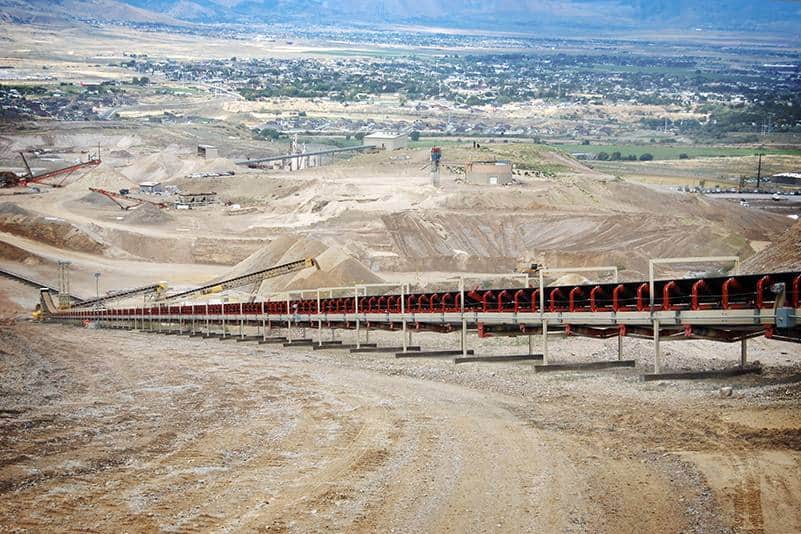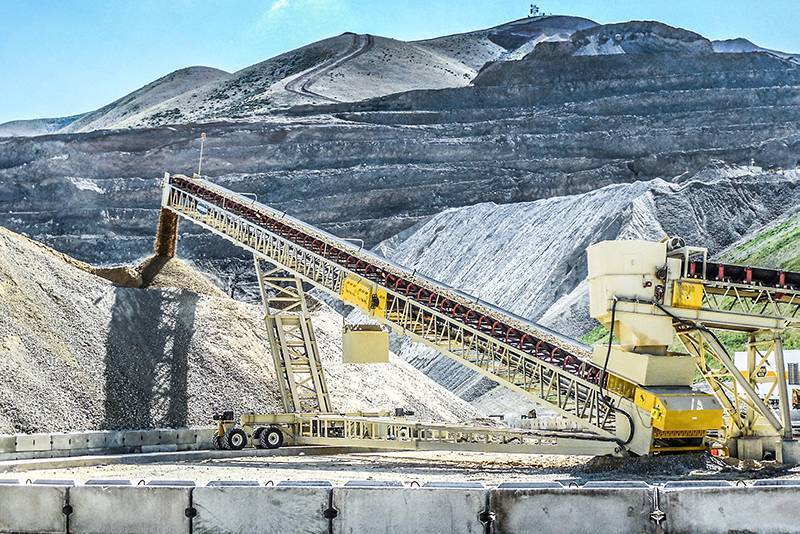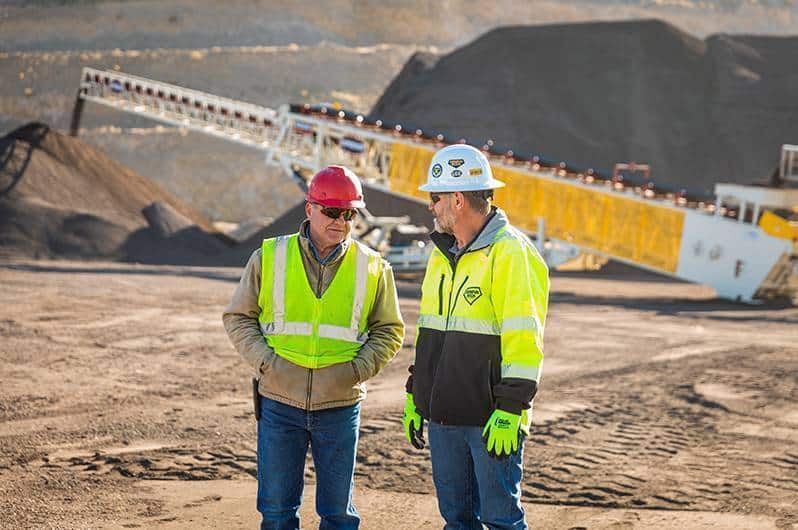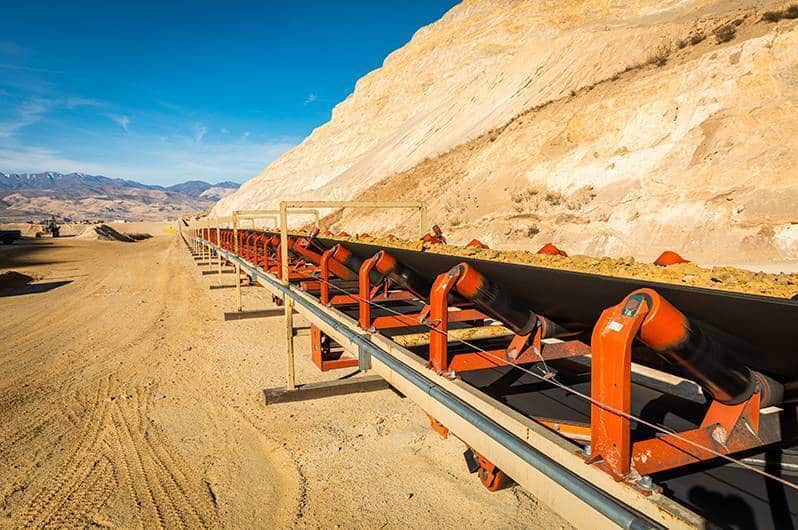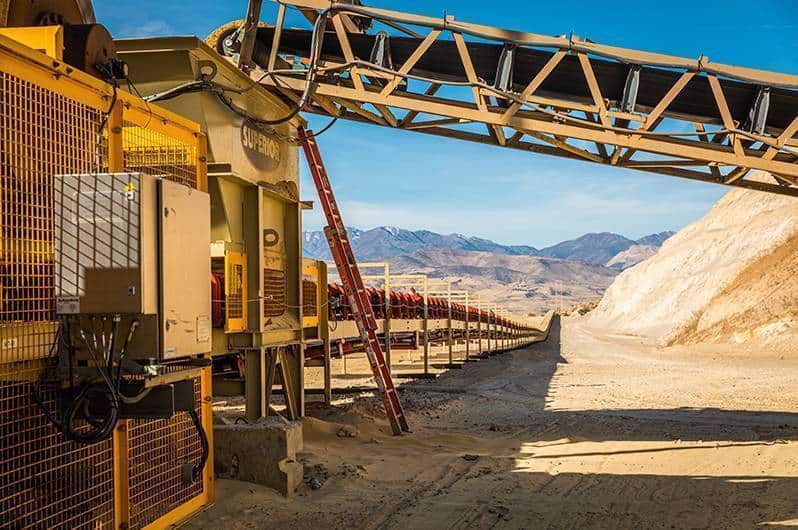Moving Mountains
An energy-generating, downhill overland conveyor system boosts safety, savings, and sustainability.
Moving mountains of upper-ledge rock material to ground-level crushing and processing operations had once posed a significant transport challenge at Geneva Rock Products’ Point-of-the-Mountain site. Today the operation boasts a state-of-the-art material handling solution with the installation of an innovative downhill conveyor system that meets the company’s key goals of maintaining sound, sustainable environmental practices; lowering operational costs; and increasing worker safety.
Carl Clyde, who serves as the company’s vice-president of gravel and asphalt, says that within Utah’s sand & gravel industry, this particular downhill conveyor system is unique, especially since it’s designed to generate electricity, enough to ultimately provide power to much of the 50-acre site.
“Geneva Rock Products is committed to sustainability, and we find this system to be the most efficient, safe, and sustainable way to move aggregate materials,” says Clyde, who adds that the $11 million overland system will pay for itself in two years or less.
In the late fall of 2012, Geneva Rock began cutting the grade in preparation for installation, which would begin in December of 2013. Startup was initiated in May of 2014, and the following fall marked the final phase of the project which included getting the power contained and interconnected on the property.
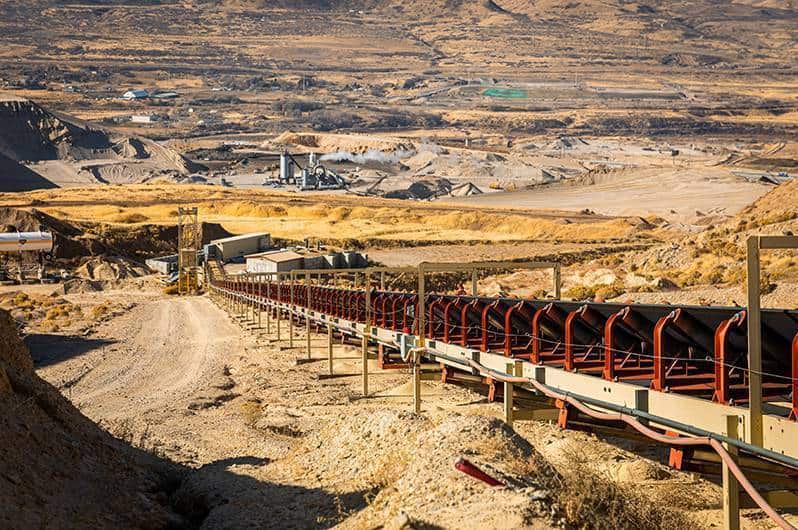
Project Details
COMPANY
Geneva Rock
LOCATION
Draper, Utah
APPLICATION
Aggregates: Sand & Gravel
PRODUCT(S)
Engineered Overland Conveyor
Radial Stacking Conveyor
Summary
Geneva Rock was seeking a cost-effective, power-producing way to transport material from the top of a mountain to the base when they purchased an engineered overland conveyor. The company has been impressed with Superior’s quality and service, driving them to exclusively use Superior components in their operations. The overland conveyor hauls at least 3,000 tons per hour.
The overland system was designed, engineered, and manufactured by Superior Industries, a leading manufacturer of bulk handling systems as well as conveyor components, such as idlers and pulleys. Throughout the entire process, the team at Geneva Rock worked closely with Superior’s engineering and service teams, as well as with the industry veterans at Salt Lake City-based Kimball Equipment, a dealer for Superior Industries.
Clyde says that the entire team has done a tremendous engineering job in designing the system and each of its components, ultimately allowing the operation to lower operating costs, while maximizing uptime and meeting production goals. The latter is keenly important to the Point-of-the-Mountain operation.
“It is imperative that we operate as efficiently as possible, as this site alone provides more than 75 percent of the material that our company requires,” says Ed Clayson, aggregate production manager at Geneva Rock. “We mine a unique quartzite material that is highly sought after in our area,” Described as a quartzite that is ‘pre-split’ by natural seismic forces, Clayson says that the 100-percent fractured face of the material leads to the high-quality concrete and asphalt products that their customers expect.
System overview
Clayson explains that the new overland conveyor system is an excellent fit for the operation. “First, it allows us to efficiently feed two of the largest crushing circuits in the state of Utah. Material is transported at up to 3,500 tons per hour from the ledge to the crushing plants,” he says. To sum it up, Clayson describes the operation’s capabilities as being able to move material from the mountain and deliver it to the jobsite in the same day.
Transport begins with loaders feeding the material into vibrating grizzly feeders where it’s sized to 7-inch minus and discharged to a hopper which feeds three downhill conveyors of varying lengths (700, 800, and 1050-feet). Conveyed on 60-inch belts, the material is transported 400-feet per minute. As a gravity-fed system, the steepest point of the downhill incline is at an 18.66-percent grade.
After traveling 2,550-feet, the material is fed to a 100-foot transfer conveyor, and then onto a 150-foot radial stacker, which feeds two tunnel feeders – one going to the wash plant and the other to the dry plant. “With the radial stacker, we’re able to create two surge piles ahead of the tunnel feeders if we need to. Should we ever have to shut the overland system down, having the surge piles will reduce or eliminate any processing downtime,” says Clayson.
Sustainability & sound environmental practices
Clayson outlines the basics of how the overland conveyor system generates electricity. “The conveyor system is controlled by PLC controls, and a variable frequency drive acts as a braking system to control the energy. Essentially, the system takes the excess power generated from the belt and feeds it to a central distribution center to be used for plant operations,” he says adding that the more material on the belt, the more energy is produced. “That is sustainability at its best,” says Clayson.
According to Superior Industries engineers, another major driver behind the investment in an overland conveyor system is the reduction of particulate matter in the air. Highly scrutinized due to ever-tightening environmental regulations, individual wheeled haulage units, such as dozers, loaders, and haul trucks emit and stir pollution along the entire transfer path. Alternatively, overland conveyor systems offer quiet and almost dust-free operation – and when designed properly, can blend in with the environment.
Lower operating costs & increased safety

In addition to the energy savings, Clayson says that prior to installing the conveyor system; Geneva Rock was faced with the concern of how to safely get material from upper levels to the processing level. As its material source continued to get higher up and further away from the processing plants, dozers were used to push material for long distances.
“It took considerable time to get the bench down to a safe level and work underneath it. That is a tremendous amount of dozer use, wear and tear on equipment, and labor costs. Now we have minimal material handling at the top, and the material is easily and safely conveyed down,” says Clayson. He adds that if not for the new conveyor system, the operation would have required an additional nine pieces of mobile haulage equipment to meet current production capacity levels.
Also, Clayson stresses the importance of another key safety feature – the emergency braking system. Superior Industries outfitted the conveyor system with a Svendborg hydraulic brake system. Unlike overland conveyor systems that move material uphill or along a flat ground surface, the downhill conveyor poses additional hazards due to gravity, terrain, and profile. It is imperative to have an intelligent braking system to address the starting and stopping requirements under various load conditions. “With the tonnages and the grade involved, these conveyors require a highly effective braking system, and this one works flawlessly,” he says.
Ideal material handling
Clearly, the ideal choice is the use of efficient conveyor systems that will reduce or eliminate the need for wheeled haulage equipment.
Conveyors eliminate the multiple handling of material. Conveyors cut labor and training costs. They will operate at maximum efficiency during every hour of operation, and have a lifespan of more than 20 years. Conveyors can operate on grades up to 35-percent. They are not sensitive to fuel shortages or fuel prices.
And finally, conveyor systems such as the one operating at Geneva Rock, can even be designed to generate electricity while efficiently moving mountains of material.
Have questions? Need more information? Complete the form below and we will follow up shortly.
Request More Info
See our privacy policy.

